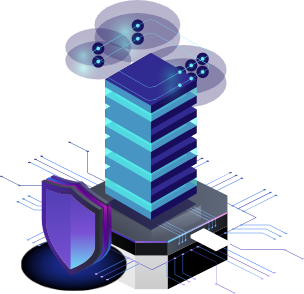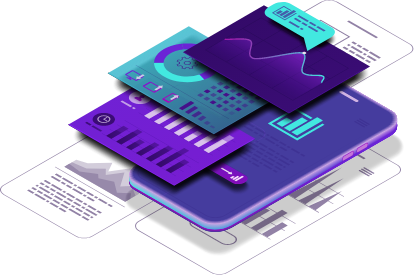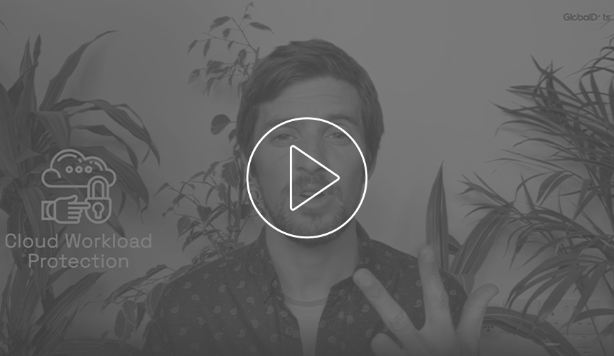Solution overview
In a world where many companies are using public cloud computing, storage and networking services, there are different cybersecurity threats aiming to gain access to sensitive data and exfiltrate it from the cloud. Effectively detecting and intercepting malicious activity without impeding business processes is therefore the primary mission of every security leader in a cloud-centric environment.
CSPM (Cloud Security Posture Management) and CWPP (Cloud Workload Protection Platforms) solutions can detect and minimize excessive permissions and misconfigurations in the public cloud. This helps decrease cloud attack surface while continuously minimizing alert volume.
Download
-
-
Get the Full eBook How To Select Your Cloud Workload Protection Solution: A Comparison Guide
How Cloud Workload Protection Amplifies Security & Business

AI-Based Anomaly Detection
AI-Based Anomaly Detection

Proactive, Automated Permission Hardening
Proactive, Automated Permission Hardening

Consolidated Visibility
Consolidated Visibility

Agile and Configurable
Agile and Configurable
Implementing Cloud Workload Protection with GlobalDots
-
Less Alerts, Higher Accuracy
Eliminate alert fatigue by putting an end to unimportant or unactionable alerts.We promote configurable, heavily-automated solutions which will proactively handle most scenarios, and will only flag what truly requires your attention.
-
Real-Time Indications & Suggestions
Take no prisoners. Sophisticated, cross-infrastructure solutions mean early detection of attack attempts, applying smart correlation of seemingly unrelated, sporadic events along with suggestions for effective, timely remediation.
-
Critical Compliance Simplified
Take one liability off your plate with quick, automated reporting, compliant with PCI DSS, ISO 27001, SOC2, and more, which apply to both enterprises and enterprise vendors.
-
Behavior Analysis
ML-based solutions quickly adjust to “new normals” in terms of each team’s work practices, with little or no need to reconfigure. This means less workflow interruptions, and less daily maintenance for you.
Some Background
The Old Insider Is the New Outsider
Moving workloads to the cloud has led to organizations (and IT administrators) losing direct physical control over their workloads and relinquishing many aspects of security through the “shared responsibility model”. As a result, the insider of the old premise-based world is suddenly an outsider in the new world of publicly hosted cloud infrastructure. Employees such as IT administrators, developers and security teams are just like hackers now and have identical access to publicly hosted workloads,using standard connection methods, protocols and public APIs. As a result, the whole world becomes an insider threat. Cloud workload security, therefore, is defined by the people and machines who can access those workloads and the permissions they have.
Your Permissions = Your Attack Surface
Primary reasons for migrating to the cloud include decreasing time to market and streamlining business processes. As a result, cloud environments make it very easy to spin up new resources and grant wide-ranging permissions, but they also make it very difficult to keep track of which users have permissions and who uses them.
All too frequently, there is a gap between granted permissions and used permissions. In other words, many users have too many permissions that they never use. Such permissions are frequently exploited by hackers who take advantage of them for malicious purposes. As a result, cloud workloads are vulnerable to data breaches (i.e., theft of data from cloud accounts), denial of service violations (i.e., completely taking over cloud resources) and resource exploitation (such as cryptomining).
In an ideal world, each developer or DevOps engineer would get the minimal amount of permissions to allow them to perform their job,. There is a fine line between the neverending task of reducing the attack surface of excessive permissions and allowing the business to be agile and move fast without the hurdles of security.
Continuous Smart (Mis)Configuration Hardening
To prevent attacks, enterprises must harden cloud workload configurations to address permission abuse, by applying continuous hardening checks. The goals are to avoid public exposure of data from the cloud and reduce overly- permissive access to resources by making sure communication between entities within a cloud, as well as access to assets and APIs are only allowed for valid reasons. Only smart configuration hardening that applies a “least privilege” approach enables enterprises to meet these standards. The process requires applying behavioral analytics methods over time, including regular reviews of entitlements and permissions, and a continuous analysis of each entity’s regular behavior to ensure users only have access to what they need, nothing more. By reducing attack surfaces, enterprises make it harder for hackers to move laterally in the cloud.
Secured Shouldn’t Mean Slow
When moving fast by consuming more cloud-native functions, you must also include smart security solutions that help you, as a security professional, to become an enabler of the business rather than the bad guy that keeps saying “no” to requests, or keep chasing down developers to close security holes that detract them from their core mission. An ideal cloud-native security solution should have an intelligent, AI-based learning component that can detect abnormal behaviors, correlate sporadic suspicious events into a coherent attack story, and provide prioritized, actionable recommendations to harden the cloud environment and permissions in the most time-efficient manner. Automated remediation can save a lot of time and effort, if done correctly with minimal false positives, and prevent attackers from moving laterally up the attack kill-chain. This balance between security, technology, and automation allows developers and DevOps personnel to focus on enabling accelerated business growth with minimum security headcount.
Keep Exploring on the GlobalDots Blog
From Our Experts
Attackers Use Automation – So Should You
Bots are frequently used by hackers while they are performing reconnaissance against potential targets.
From Our Experts
3 Reasons Why Excessive Permissions are Your #1 Cloud Threat
Protecting against excessive permissions, and quickly responding when those permissions are abused, became the #1 priority for security administrators.
From Our Experts
Most Cyber Attacks Follow These 6 Stages
The biggest and most harmful attacks don’t happen in minutes, but rather unfold over months. They aren’t executed in a few clicks, but through a long process of exploration and exploitation. Here’s how to better prepare for them.
From Our Experts
Stop Thinking Detection. Think Correlation
Why security alerts are useless without proper context, and how to obtain it without sweating it.
About GlobalDots
GlobalDots is a 17-year world leader in cloud innovation, connecting businesses with the latest cloud & web technologies.
Fusing an insatiable hunger for innovation with a diligent team of hands-on experts, we help our customers maintain an up-to-date technology position in a quickly-changing world.
We consult, resell, implement, and customize full-stack solutions, including cost & performance optimization, security, connectivity, and managed services, to streamline business processes and provide the foundation for sustainable business growth.
Trusted By


































Talk to an Expert &
Request a Demo
Schedule a call with our experts. Discover new technology to improve your performance, and get web security recommendations.
Innovation challenged customized put to work supported
Innovation Challenged
Our engineers explore & evaluate multiple vendors for each new technology, only introducing to our portfolio what meets their uncompromising standards and thorough examination.
Innovation Customized
We are young cloud industry veterans, intimate with the ins-and-outs of every technology we deal with. We deliver a fully integrated and configured solution, even when custom developments are required.
Innovation Put To Work
With our expertise, rest assured you utilize the full arc of features and capabilities, to optimize your performance and protection in a cost-effective manner.
Innovation Supported
We proactively advise newer, better solutions, to keep one trouble off your plate and allow you focus on your top priority - development and revenue generation.
Follow Us
© 2021 GlobalDots. All rights reserved.
Here you can find our Privacy Policy and GDPR Privacy Notice | Privacy Settings
This site uses third-party website tracking technologies to provide and continually improve our services, and to display advertisements according to users' interests. I agree and may revoke or change my consent at any time with effect for the future.




